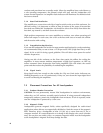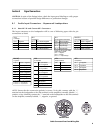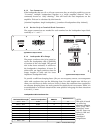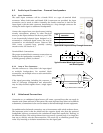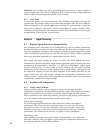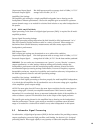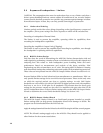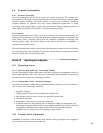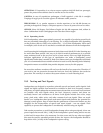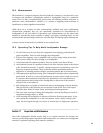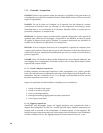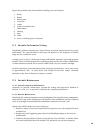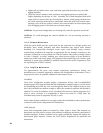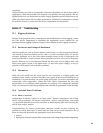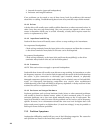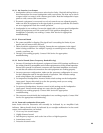
ATTENTION: Si l'exposition à un niveau sonore supérieur à100 dB doit être proongée,
portez des protections auditives dans les oreilles ou sur les oreilles.
CAUTELA: In caso di esposizione prolungata a livelli superiori a 100 dB, si consiglia
l'impiego di tappi per le orecchie oppure di indossare cuffie protetive.
PRECAUCION: Si a a quedar expuesto a niveles superiores a los 100 dB durante un
periodo prolongado de tiempo, colóquese tapones o cascos de protección en los oídos.
GEFAHR: Wenn Sie längere Zeit höheren Pegeln als 100 dB ausgesetzt sind, sollten Se
einen Gehörschutz inden Gehörgängen oder über den Ohren tragen.
10.2.1 Operating Levels
EAW loudspeakers, when appropriately powered, are capable of producing sound levels
that are potentially damaging to your hearing. For a single loudspeaker and depending
on the product, this can easily occur within 50 ft / 15 m of the loudspeaker. When used
in multiples, such levels can be reached at considerable distances from the loudspeakers.
Avoid operating the loudspeaker systems at levels that exceed 100 dB PL in the listening area
for more than short periods. One way to do this for musical performances is to provide
some moderate boost at the very low and to a lesser extent, at the very high frequencies.
Judicious applications of this type of equalization can make a loudspeaker sound
significantly louder than it actually is. Both your listeners and your loudspeakers will thank
you. It is recommended that a sound level meter be used to verify listening levels. Relatively
inexpensive meters are available that provide adequate accuracy for this purpose.
Be aware that audience members will not have the benefit of ear protection. Therefore, if
you need to use ear protection because the levels are loud, the audience also needs ear
protection. The remedy is to reduce the system volume to a safer listening level.
10.3 Testing and Test Signals
Loudspeakers are designed to reproduce primarily speech and music audio signals. Such
signals are highly variable from moment to moment in their level, frequency content,
and phase. Accepted loudspeaker measurements and tests that are accurate and consistent
are possible only with signals where the level, frequency content, and phase are
accurately known and consistent at all times. Such signals include sine waves, swept
tones, pink noise, white noise, and other constant level test signals. These are much
harder on a loudspeaker than speech and music signals and therefore the potential for
damage is much greater. Keep in mind that the parameters of electronic limiters are also
designed for the characteristics of speech and music signals - not test signals. Their
capability to protect the loudspeaker is considerably reduced using test signals.
Take certain precautions to avoid loudspeaker damage when using test signals. Never use
power inputs that exceed 50% (-3 dB) of the loudspeaker's power rating and do not test
at this level for more than a few moments. For sine waves and for any other test signals
that must be used for extended periods of time, the input to the loudspeaker should be
kept below 10% (-10 dB) of the loudspeaker's power rating.
16



